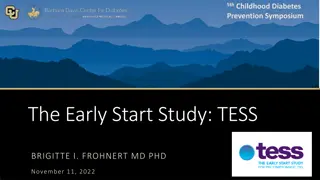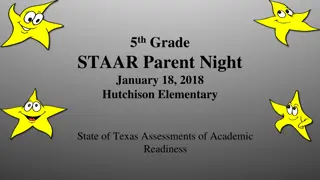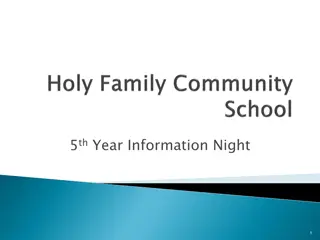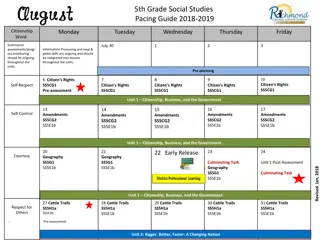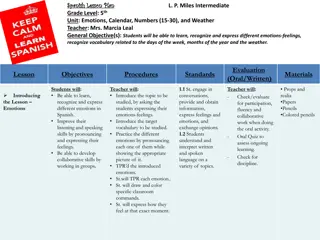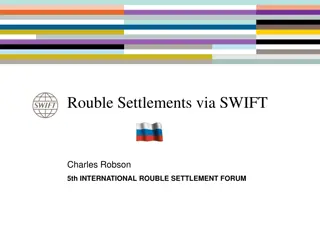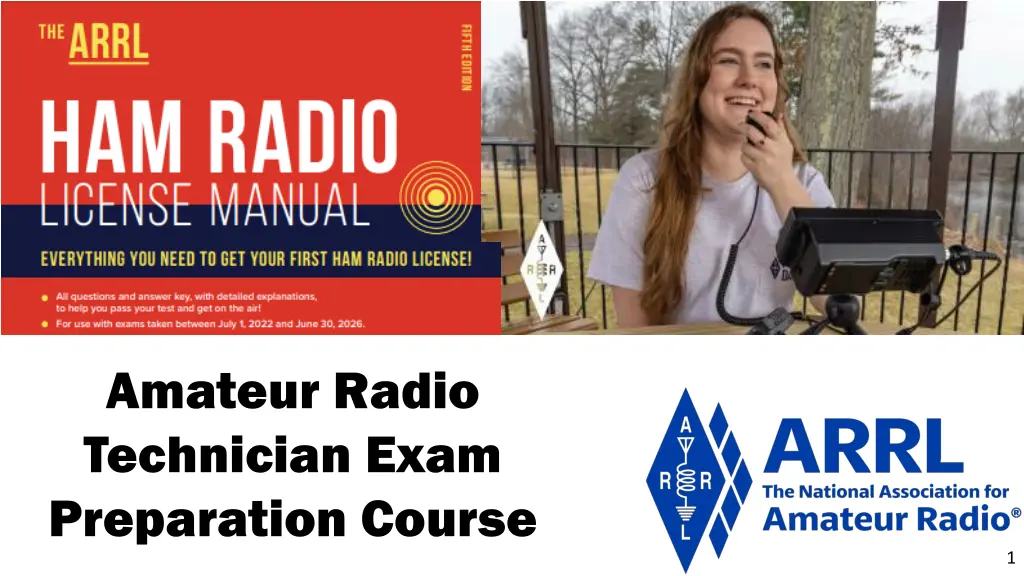
Radio Technician Exam Prep Course for Amateur Operators
"Prepare for the Amateur Radio Technician Exam with this comprehensive course covering radio signals, equipment basics, metric prefixes, and practice questions. Test your knowledge with questions on amperes, hertz, volts, and more."
Download Presentation

Please find below an Image/Link to download the presentation.
The content on the website is provided AS IS for your information and personal use only. It may not be sold, licensed, or shared on other websites without obtaining consent from the author. If you encounter any issues during the download, it is possible that the publisher has removed the file from their server.
You are allowed to download the files provided on this website for personal or commercial use, subject to the condition that they are used lawfully. All files are the property of their respective owners.
The content on the website is provided AS IS for your information and personal use only. It may not be sold, licensed, or shared on other websites without obtaining consent from the author.
E N D
Presentation Transcript
Amateur Radio Technician Exam Preparation Course 1
Amateur Radio Technician Exam Prep Course Module 2 Radio and Signals Fundamentals 2.1 Radio Signals and Waves 2.2 Radio Equipment Basics 2 2
Metric Prefixes The Language of Radio (see Table 2.1) Metric system used because numbers cover large range of values Most common prefixes in radio Pico (p), 0.000000000001, 10-12 Nano (n), 0.000000001, 10-9 Milli (m), 0.001, 10-3 Centi (c), 0.01, 10-2 Kilo (k), 1000, 103 Mega (M), 1000000, 106 Giga (G), 1000000000, 109 NOTE: Mega and Giga use capital letters in the abbreviation. 3 3
Table 2.1: International System of Units (SI) Metric Units PREFIX SYMBOL MULTIPLICATION FACTOR 1012 = 1,000,000,000,000 109 = 1,000,000,000 106 = 1,000,000 103 = 1000 102 = 100 101 = 10 10-1 = 0.1 10-2 = 0.01 10-3 = 0.001 10-6 = 0.000001 10-9 = 0.000000001 10-12 = 0.000000000001 Tera T NOTE Giga G 1 10 Mega M 10 1= Kilo k Hecto h 1 10 2= Deca da 100 Deci d 1 Centi c 10 3= 1000 Milli m Micro Nano n Pico p 4 4
How many milliamperes is 1.5 amperes? A. 15 milliamperes B. 150 milliamperes C. 1500 milliamperes D. 15,000 milliamperes T5B01 C 2-2 (Format: T5B01 = test pool question, C = correct answer, 2-2 = page number in manual) 6 6
Which is equal to 1,500,000 hertz? A. 1500 kHz B. 1500 MHz C. 15 GHz D. 150 kHz T5B02 A 2-2 7 7
Which is equal to one kilovolt? A. One one-thousandth of a volt B. One hundred volts C. One thousand volts D. One million volts T5B03 C 2-2 8 8
Which is equal to one microvolt? A. One one-millionth of a volt B. One million volts C. One thousand kilovolts D. One one-thousandth of a volt T5B04 A 2-2 9 9
Which is equal to 500 milliwatts? A. 0.02 watts B. 0.5 watts C. 5 watts D. 50 watts T5B05 B 2-2 10 10
Which is equal to 3000 milliamperes? A. 0.003 amperes B. 0.3 amperes C. 3,000,000 amperes D. 3 amperes T5B06 D 2-2 11 11
Which is equal to 3.525 MHz? A. 0.003525 kHz B. 35.25 kHz C. 3525 kHz D. 3,525,000 kHz T5B07 C Page 2-2 12 12
Which is equal to 1,000,000 picofarads? A. 0.001 microfarads B. 1 microfarad C. 1000 microfarads D. 1,000,000,000 microfarads T5B08 B 2-2 13 13
Which is equal to 28400 kHz? A. 28.400 kHz B. 2.800 MHz C. 284.00 MHz D. 28.400 MHz T5B12 D 2-2 14 14
Which is equal to 2425 MHz? A. 0.002425 GHz B. 24.25 GHz C. 2.425 GHz D. 2425 GHz T5B13 C 2-2 15 15
Frequency (See Fig 2.1) Radio waves continually vary in strength or amplitude This continual change is called oscillating Each complete up-and-down sequence is called a cycle Frequency (f) is the number of cycles/second (measured in Hertz, Hz) The period of the cycle (T) is its duration A harmonic is a signal with a frequency that is some multiple ( 2, 3, 4 and so on) of a fundamental frequency 16 16
Figure 2.1: The frequency of a signal and its period are reciprocals. Higher frequency means shorter period and vice-versa. WAVE VOCABULARY Amplitude Frequency (hertz, Hz, cycles/sec) Period (T, seconds, s) Fundamental Harmonics 17
Figure 2.2: PHASE is used as a measure of time within the signal. Each cycle of a sine wave is divided into 360 of phase (A). Parts (B) and (C) show two special cases. In (B) the two signals are 90 out of phase, and in (C) they are 180 out of phase. Position within a cycle is called phase. Phase is used to compare how sine wave signals are aligned in time. Measured in degrees. 18
What is the unit of frequency? A. Hertz B. Henry C. Farad D. Tesla T5A06 A 2-3 20 20
What describes the number of times per second that an alternating current makes a complete cycle? A. Pulse rate B. Speed C. Wavelength D. Frequency T5A12 D 2-3 21 21
What is the abbreviation for megahertz? A. MH B. mh C. Mhz D. MHz T5C07 D 2-3 22 22
What is the abbreviation for kilohertz? A. KHZ B. khz C. khZ D. kHz T5C13 D 2-3 23 23
The Radio Spectrum Signals that have a frequency greater than 20,000 Hz (or 20 kHz) are radio frequency or RF signals. 24 24
Electromagnetic Waves Electromagnetic waves are made up of electric and magnetic energy (fields) The electric and magnetic fields vary in the pattern of a sine wave Electromagnetic waves travel at the speed of light Moving electrons in an antenna take the place of the moving magnet A signal from a transmitter can make the electrons in an antenna move, transferring energy from the signal to electromagnetic waves The same process works backwards too Electromagnetic waves encountering an antenna make its electrons move in sync with the wave 25 25
Electromagnetic Waves (cont.) Electromagnetic energy is transferred from the wave to the electrons The moving electrons create a signal that can be detected by a receiver The electromagnetic spectrum is divided into ranges of frequencies in which electromagnetic waves behave similarly Each range or segment has a different name Waves with a certain range of frequencies which can be used for communication are called radio waves 26 26
The Radio Spectrum (cont.) The range of radio signal frequencies is called the radio spectrum Starts at 20 kHz and continues through several hundred GHz A specific range of frequencies in which signals are used for a common purpose or have similar characteristics is called a band Frequency bands used by amateurs are called amateur bands or ham bands Frequencies above 1 GHz are generally considered to be microwaves 27 27
Table 2.2: RF Spectrum Ranges Range Name Abbreviation VLF LF MF HF VHF UHF SHF EHF Frequency Range 3 kHz 30 kHz 30 kHz 300 kHz 300 kHz 3 MHz 3 MHz 30 MHz 30 MHz 300 MHz 300 MHz 3 GHz 3 GHz 30 GHz 30 GHz 300 GHz Very Low Frequency Low Frequency Medium Frequency High Frequency Very High Frequency Ultra High Frequency Super High Frequency Extremely High Frequency 28
Figure 2.4 As a radio receiver is tuned across the AM broadcast band, starting at the left, it encounters each signal in turn. Between signals, only noise is received. Although signals can be received slightly lower and higher in frequency, the signal is received best when the receiver is tuned exactly to the signal s frequency. 29
What frequency range is referred to as VHF? A. 30 kHz to 300 kHz B. 30 MHz to 300 MHz C. 300 kHz to 3000 kHz D. 300 MHz to 3000 MHz T3B08 B 2-4 31 31
What frequency range is referred to as UHF? A. 30 to 300 kHz B. 30 to 300 MHz C. 300 to 3000 kHz D. 300 to 3000 MHz T3B09 D 2-4 32 32
What frequency range is referred to as HF? A. 300 to 3000 MHz B. 30 to 300 MHz C. 3 to 30 MHz D. 300 to 3000 kHz T3B10 C 2-4 33 33
What does the abbreviation RF mean? A. Radio frequency signals of all types B. The resonant frequency of a tuned circuit C. The real frequency transmitted as opposed to the apparent frequency D. Reflective force in antenna transmission lines T5C06 A 2-4 34 34
Wavelength Wavelength is the distance a radio wave travels during one cycle of the wave s electric and magnetic fields (lambda) is the symbol for wavelength Waves travel at the speed of light, c (300,000,000 or 3 108 meters per second) Hams can refer to bands by frequency (50MHz) or wavelength (6 meters) Because radio waves travel at a constant speed (one wavelength) ? =? ? 35 35
Wavelength (cont.) Figure 2.5 As a radio wave travels, it oscillates at the frequency of the signal. Wavelength is the distance traveled by the wave during the time for one complete cycle. A radio wave can be referred to by wavelength or frequency because the wave is moving at a constant velocity the speed of light. If you know the frequency of a radio wave, you automatically know its wavelength! 36 36
What is the velocity of a radio wave traveling through free space? A. Speed of light B. Speed of sound C. Speed inversely proportional to its wavelength D. Speed that increases as the frequency increases T3B04 A 2-5 38 38
What is the relationship between wavelength and frequency? A. Wavelength gets longer as frequency increases B. Wavelength gets shorter as frequency increases C. Wavelength and frequency are unrelated D. Wavelength and frequency increase as path length increases T3B05 B 2-5 39 39
What is the formula for converting frequency to approximate wavelength in meters? A. Wavelength in meters equals frequency in hertz multiplied by 300 B. Wavelength in meters equals frequency in hertz divided by 300 C. Wavelength in meters equals frequency in megahertz divided by 300 D. Wavelength in meters equals 300 divided by frequency in megahertz T3B06 D 2-5 40 40
In addition to frequency, which of the following is used to identify amateur radio bands? A. The approximate wavelength in meters B. Traditional letter/number designators C. Channel numbers D. All these choices are correct T3B07 A 2-5 41 41
What is the approximate velocity of a radio wave in free space? A. 150,000 meters per second B. 300,000,000 meters per second C. 300,000,000 miles per hour D. 150,000 miles per hour T3B11 B 2-5 42 42
Radio Equipment Basics Antenna The Basic Radio Station (also called a Transceiver) Feed line Transceiver TRANSMITTER TR SWITCH RECEIVER POWER SUPPLY 43 43
An Amateur Radio Station Consists of 3 Basic Elements Transmitter (XMTR) Generates a signal carrying speech, Morse Code, or data Receiver (RCVR) Recovers the signal from someone else s transmitter Antenna Turns signals from transmitter into energy (radio waves) Captures signals (radio waves) and turns them into signals for the receiver A feed line (or transmission line) connects the antenna to the transmitter or receiver Most systems combine transmitter & receiver into a Transceiver (abbreviated XCVR) 44 44
What is a transceiver? A. A device that combines a receiver and transmitter B. A device for matching feed line impedance to 50 ohms C. A device for automatically sending and decoding Morse code D. A device for converting receiver and transmitter frequencies to another band T7A02 A 2-7 46 46
Radio Equipment Basics (cont.) Repeaters 47 47
Repeaters Consists of a receiver and transmitter that re-transmit info from a received signal simultaneously on another frequency or channel Called duplex communication Usually located on high buildings, towers, hills, etc. for max. range Provide local & regional communications between low-power stations Often used for local emergency traffic Can be used for voice, data, or video signals (voice is the most common) The duplexer allows the repeater s transmitter and receiver to share a common antenna at the same time 48 48
What type of amateur station simultaneously retransmits the signal of another amateur station on a different channel or channels? A. Beacon station B. Earth station C. Repeater station D. Message forwarding station T1F09 C 97.3(a)(40) 2-8 50 50








